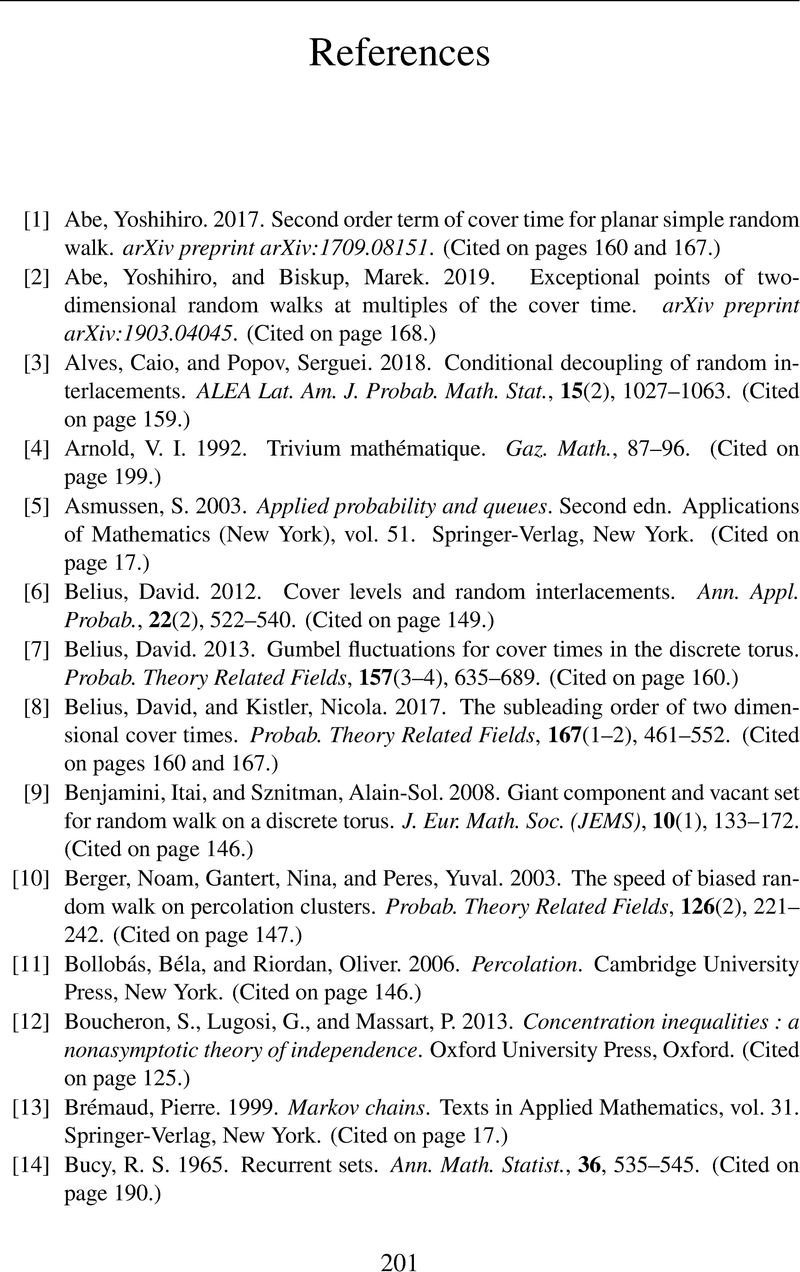Book contents
- Frontmatter
- Contents
- Preface
- Notation
- 1 Introduction
- 2 Recurrence of two-dimensional simple random walk
- 3 Some potential theory for simple random walks
- 4 SRW conditioned on not hitting the origin
- 5 Intermezzo: soft local times and Poisson processes of objects
- 6 Random interlacements
- Index
- Hints and solutions to selected exercises
- References
- References
References
Published online by Cambridge University Press: 09 December 2020
- Frontmatter
- Contents
- Preface
- Notation
- 1 Introduction
- 2 Recurrence of two-dimensional simple random walk
- 3 Some potential theory for simple random walks
- 4 SRW conditioned on not hitting the origin
- 5 Intermezzo: soft local times and Poisson processes of objects
- 6 Random interlacements
- Index
- Hints and solutions to selected exercises
- References
- References
Summary

- Type
- Chapter
- Information
- Two-Dimensional Random WalkFrom Path Counting to Random Interlacements, pp. 201 - 207Publisher: Cambridge University PressPrint publication year: 2021



